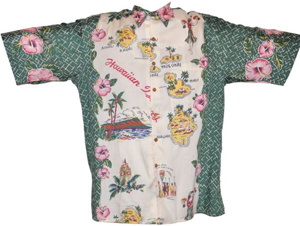Jean Elizabeth Spangler a dancer, model and bit-part actress in Hollywood films and in early television, disappeared under mysterious circumstances in 1949.
On October 7, 1949, Spangler left her home in Los Angeles around 5:00 p.m. She left her daughter with her sister-in-law Sophie. She said that she was meeting her former husband to discuss a late child support payment and after that, she was going to work on a night shoot for a film. The last person to see her was a clerk in a store near her home who said that she appeared to be waiting for someone. She was never seen again. Sophie, went to the police and filed a missing person report the next day.
Though Spangler had told her sister-in-law that she was going to work on a movie set after she met with her ex-husband, this lead went nowhere. She had worked as an extra for several different Hollywood studios, but none of those studios had any work in progress or were even open on the evening of October 7.
Police questioned Spangler's ex-husband, Dexter Benner. He said that he had not seen her for several weeks. His new wife Lynn Lasky Benner told police that he was with her at the time of the disappearance.
Two days later Spangler's purse was found in Griffith Park in Los Angeles, with both of the straps on one side torn loose as if it had been ripped from her arm. Police officers and over one hundred volunteers searched the park, but no other clues were found. The police ruled out robbery. There was an unfinished note in the purse addressed to a "Kirk," which read:
"Can't wait any longer, Going to see Dr. Scott. It will work best this way while mother is away,"
The note ended with a comma as if it had not been finished. Neither "Kirk" nor "Dr. Scott" could be located, and neither Spangler's family nor her friends knew anyone by those names. When Spangler's mother, Florence told police that someone named "Kirk" had picked up Jean at her house twice but stayed in his car and did not come in. Police questioned every doctor with the last name Scott in Los Angeles, but none of them had a patient with the last name Spangler or Benner. Spangler had been involved with an abusive man she called "Scotty," but her lawyer said she had not seen him since 1945.

Spangler had recently completed filming a bit part in the film Young Man with a Horn starring Kirk Douglas. Douglas was vacationing in Palm Springs when he heard about the disappearance; he called the police. When interviewed by the head of the investigating team, Douglas stated that he had heard of her name, and knew that Spangler had been an extra in his new film, but that he did not know her personally.
Spangler's girlfriends told police that she was three months pregnant when she disappeared and that she had talked about having an illegal abortion. Witnesses, who frequented the same nightclubs and bars that Spangler did, told police they had heard of a former medical student known as "Doc," who performed abortions for money, but police could not locate him, nor prove that he existed.
Spangler had been seen with Davy Ogul, an associate of infamous mobster Mickey Cohen. Ogul disappeared two days after Spangler did. This led police to investigate the possibility that Spangler and Ogul, who was under indictment for conspiracy, had fled to avoid prosecution. In 1950. A customs agent in El Paso, Texas reported seeing Ogul and a woman who looked like Spangler in a hotel in El Paso. The hotel clerk identified Spangler from a photograph, but neither Davy Ogul nor Jean Spangler's name appeared on the hotel register.
The Los Angeles Police Department continued the search without successful. Despite a nationwide search and a $1,000. reward, no further clues have surfaced. She is still listed as a missing person, and the LAPD has not closed the case.
In 2001 an episode of Mysteries and Scandals featured the case












